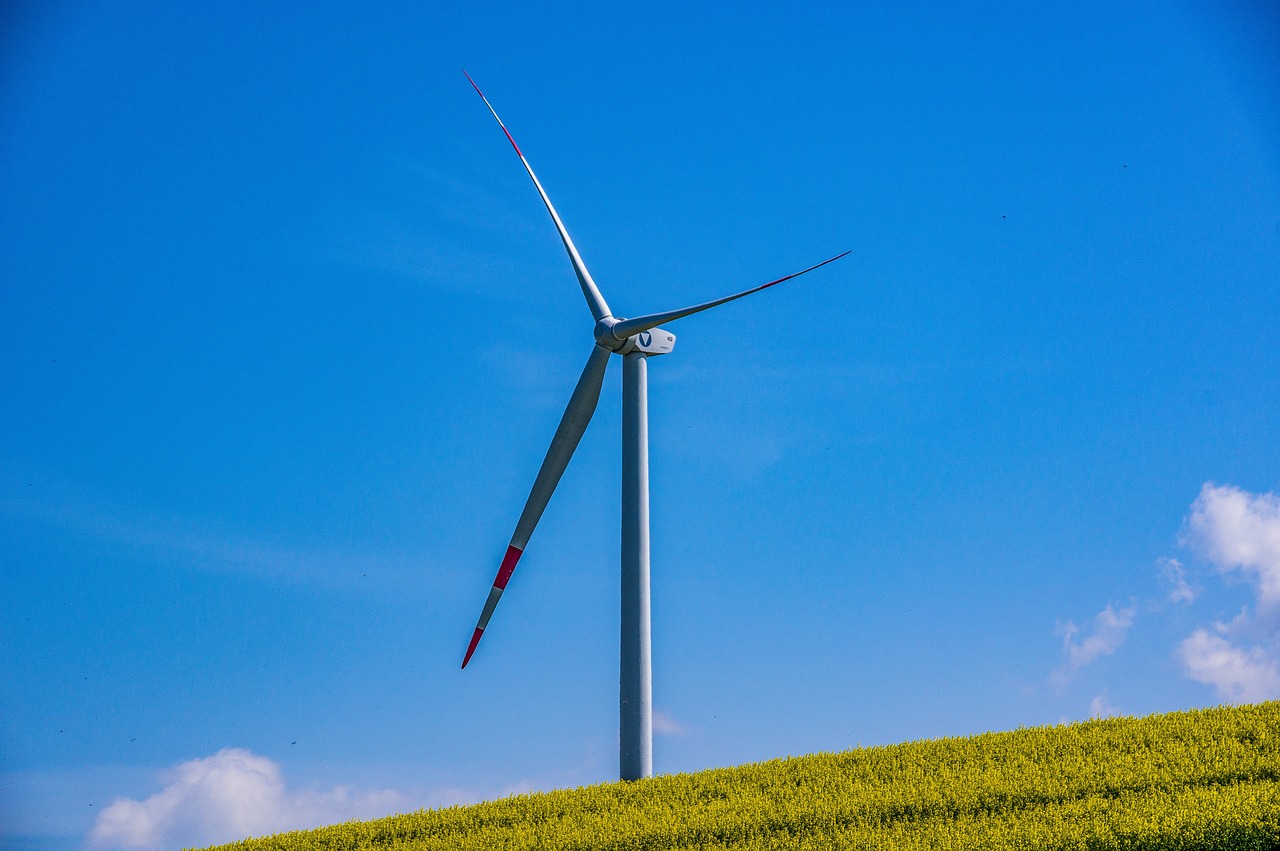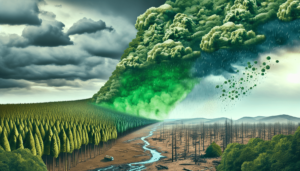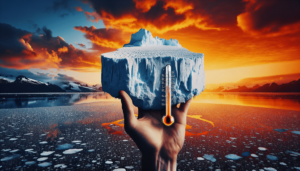In today’s article, we explore the exciting advancements in technologies aimed at mitigating the effects of climate change. From renewable energy sources to innovative carbon capture solutions, scientists and engineers around the globe are working tirelessly to develop sustainable solutions for a greener future. Join us as we delve into the world of climate change technologies and discover the potential for a more eco-friendly tomorrow.

Renewable Energy
Renewable energy sources are gaining significant attention and investment as we recognize the urgent need to transition away from fossil fuels and reduce greenhouse gas emissions. Among the various renewable energy options available, solar power stands out as an incredibly promising solution. The abundant sunlight that our planet receives can be harnessed through solar panels, converting it into usable electricity. Solar power is becoming increasingly efficient and cost-effective, making it a viable option for powering homes, businesses, and even entire communities.
Another prominent source of renewable energy is wind power. Wind turbines harness the power of the wind to generate electricity. With advancements in technology, wind farms have become more efficient, and their performance has improved over time. By strategically placing wind turbines in areas with strong and consistent wind patterns, a significant amount of clean energy can be produced. Wind power has shown great potential to reduce our reliance on fossil fuels and contribute to a more sustainable future.
Hydropower is another renewable energy option that has proven to be both reliable and efficient. By capturing the energy from moving water, such as rivers or tidal waves, hydroelectric power plants generate electricity. These plants can be designed to accommodate various scales, from small installations to large-scale hydroelectric dams. Hydropower has the advantage of being a flexible source of energy, as it can be adjusted based on the demand by opening or closing the gates of the dam. Furthermore, unlike solar and wind power, hydropower provides a constant and consistent energy supply.
Geothermal energy utilizes the heat generated from within the Earth to produce electricity. By tapping into natural reservoirs of steam or hot water, geothermal power plants are able to generate a constant and reliable supply of energy. This technology is particularly effective in regions with accessible geothermal resources, such as areas with active volcanoes or hot springs. Geothermal energy has vast potential for expansion, offering a sustainable and renewable alternative to traditional fossil fuels.
Energy Storage
While renewable energy sources such as solar and wind power have proven to be effective in generating electricity, the intermittent nature of these sources poses challenges for maintaining a stable energy grid. Energy storage technologies play a critical role in overcoming this hurdle by capturing excess energy produced during peak times and releasing it when demand is high or when intermittent sources are not available.
Battery technology has seen tremendous advancements in recent years, and it is becoming increasingly feasible to store large amounts of electricity in batteries. The popularity of electric vehicles has contributed to accelerating this progress, as the demand for efficient and long-lasting batteries continues to grow. Through research and development efforts, we are witnessing the emergence of more sustainable and cost-effective battery technologies, thus improving the overall efficiency and reliability of energy storage systems.
Pumped hydro storage is another form of energy storage that involves using water in reservoirs at different elevations. During periods of excess electricity generation, water is pumped to the higher reservoir, storing the energy. When demand increases or renewable energy sources are insufficient, the water is released to flow back down, passing through turbines that generate electricity. Pumped hydro storage has proven to be highly effective and has been in use for many decades, providing a reliable and well-established method of energy storage.
Thermal energy storage is a concept that involves capturing and storing heat energy for later use. This technology often utilizes concentrated solar power, where excess heat generated during the day is stored in special materials. The stored heat can then be used to produce electricity during periods of low sunlight or high demand. Thermal energy storage systems are versatile, with applications in both large-scale power plants and individual homes, providing a sustainable and efficient way to store and utilize thermal energy.
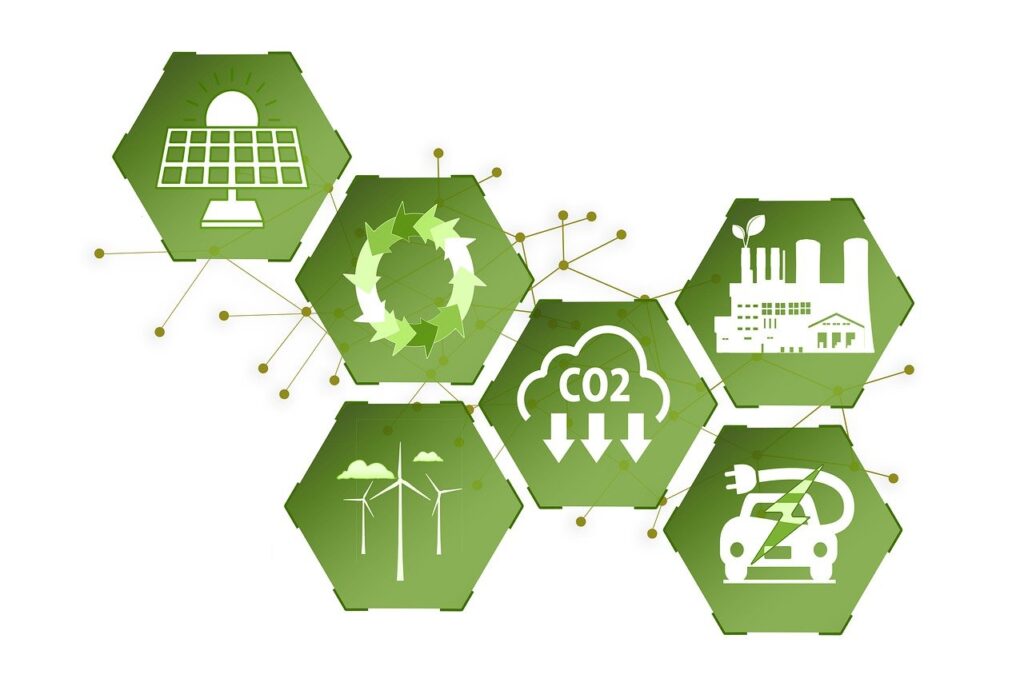
Carbon Capture and Storage (CCS)
Carbon capture and storage (CCS) technologies are aimed at reducing the amount of carbon dioxide (CO2) released into the atmosphere, mitigating the effects of climate change. These technologies primarily focus on capturing CO2 emissions from industrial processes and power plants, preventing them from being released into the atmosphere.
Direct air capture is a promising approach to CCS that involves removing CO2 directly from the air. Large-scale machines, known as carbon scrubbers, act as filters, capturing CO2 molecules and storing them in a suitable form. Direct air capture has the potential to significantly reduce CO2 levels in the atmosphere and mitigate the effects of greenhouse gas emissions.
Post-combustion capture involves capturing CO2 from the flue gases produced during the combustion of fossil fuels. This technology is particularly relevant for existing power plants and industrial facilities, as it can be retrofitted to capture and store CO2 emissions. Post-combustion capture systems ensure that carbon emissions are significantly reduced before being released into the atmosphere.
Pre-combustion capture involves capturing CO2 before the fossil fuel is burned. By extracting the CO2 from the fuel before it is combusted, this technology allows for the production of electricity or other forms of energy with significantly reduced carbon emissions. Pre-combustion capture is often implemented in integrated gasification combined cycle (IGCC) power plants, contributing to cleaner and more sustainable energy production.
Carbon Capture and Utilization (CCU)
Carbon capture and utilization (CCU) technologies aim to not only capture and store carbon emissions but also find valuable ways to utilize the captured CO2. This approach promotes the transformation of CO2 from a harmful greenhouse gas into a valuable resource for various industries.
One potential application of CCU is the utilization of captured CO2 in building materials. CO2 can be converted into carbonates, which can then be used in the production of concrete, cement, and other construction materials. This not only reduces the carbon footprint of the construction industry but also provides a way to sequester carbon permanently in infrastructure.
Another exciting area of CCU is the utilization of CO2 in the production of chemicals. CO2 can be transformed into a feedstock for the manufacturing of various chemicals, including plastics, fertilizers, and polymers. By replacing traditional petrochemical feedstocks with CO2, we can significantly reduce the dependence on fossil fuels and create a more sustainable chemical industry.
Carbon utilization in the production of fuels is another avenue being explored. CO2 can be converted into fuels such as methane, methanol, or even synthetic fuels. These fuels can be used as a cleaner alternative to traditional fossil fuels, reducing greenhouse gas emissions and contributing to a more sustainable energy sector.

Nuclear Energy
Although a topic of ongoing debate, nuclear energy is being considered as a potential solution to address the challenges of climate change. Advanced reactor designs are being developed to ensure safety, efficiency, and waste minimization. These new designs can operate at higher temperatures, increasing the efficiency of energy conversion and reducing the overall waste generated. Additionally, advanced reactor designs offer enhanced safety features, making nuclear energy a potentially safer option.
Small modular reactors (SMRs) are gaining attention as a viable nuclear energy option. These smaller-scale reactors can be prefabricated and shipped to their final location, reducing construction costs and allowing for faster deployment. SMRs offer advantages such as lower capital requirements, increased flexibility, and potential applications in remote or decentralized regions. The development of SMRs is ongoing, with prototypes being tested and adapted to meet the diverse energy needs of different communities.
Nuclear fusion is another area of research and development that holds vast potential for clean and abundant energy generation. Unlike nuclear fission, which is currently used in commercial nuclear power plants, nuclear fusion involves combining isotopes of hydrogen to release tremendous amounts of energy. Fusion aims to replicate the energy-producing process of the stars, offering a virtually limitless supply of safe and clean energy. Although significant technical and engineering challenges remain, progress is being made, bringing us closer to the dream of nuclear fusion as a practical energy source.
Bioenergy
Bioenergy offers a renewable energy solution that utilizes organic materials derived from plants, animals, and organic wastes to produce power and heat. Biofuels, such as ethanol and biodiesel, are derived from crops like corn, sugarcane, and soybeans, and can be used as substitutes for gasoline and diesel. These biofuels are considered carbon-neutral since the CO2 released during combustion is offset by the CO2 absorbed by the plants during their growth.
Biomass power generation involves utilizing organic materials, including agricultural residues, wood chips, and dedicated energy crops, to produce electricity and heat. Biomass power plants typically burn these materials to generate steam, which then drives turbines to produce electricity. The use of biomass can reduce greenhouse gas emissions compared to fossil fuel power plants, as the carbon released during combustion is offset by the carbon absorbed during the growth of the organic materials.
Biogas production involves the conversion of organic waste materials, such as food scraps, agricultural residues, and animal manure, into biogas through a process known as anaerobic digestion. Biogas is mainly composed of methane, which can be used as a fuel for electricity generation, heating, or even as a vehicle fuel. Biogas production not only provides a renewable and carbon-neutral energy source but also helps reduce the environmental impact of organic waste by diverting it from landfills and reducing methane emissions.
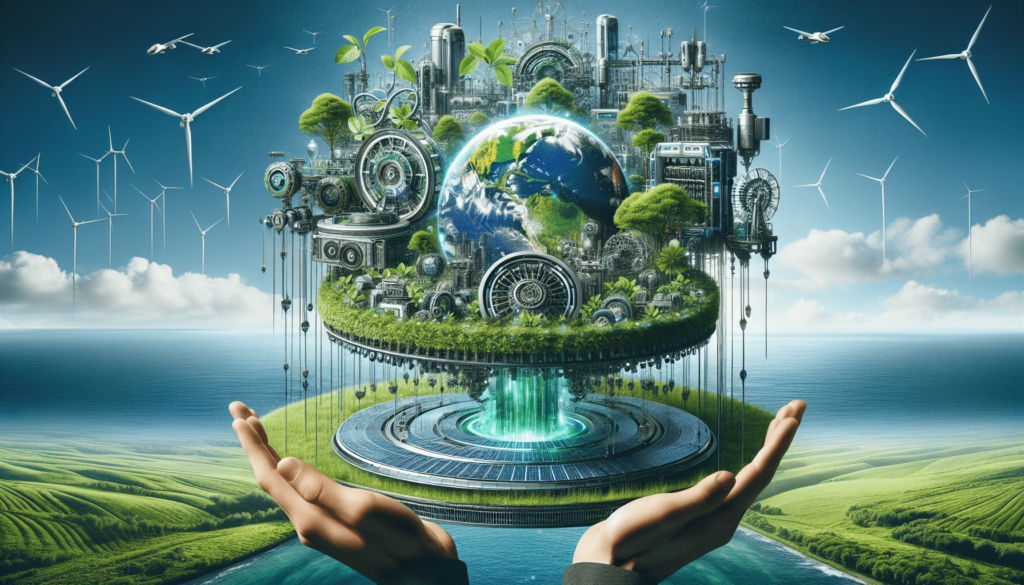
Electric Vehicles (EVs)
Electric vehicles (EVs) are rapidly gaining popularity as a sustainable transportation option with zero tailpipe emissions. Battery technology plays a crucial role in the development and adoption of EVs, as it directly impacts the range, charging speed, and overall performance of these vehicles. Continuous advancements in battery technology are leading to improved energy storage capacity, longer driving ranges, and faster charging times, making electric vehicles more accessible and practical for everyday use.
Charging infrastructure is another vital component of the electric vehicle ecosystem. The deployment of publicly accessible charging stations allows EV owners to conveniently charge their vehicles while away from home. The development of fast-charging stations has been particularly significant, as it reduces the time required to charge an EV and helps alleviate concerns about range anxiety. The expansion of charging infrastructure is necessary to support the widespread adoption of electric vehicles and encourage the transition away from internal combustion engines.
Vehicle-to-grid (V2G) integration is an innovative concept that allows electric vehicles to not only consume energy but also contribute to the energy grid. By leveraging the energy storage capacity of EV batteries, V2G systems enable vehicles to discharge electricity back into the grid during peak demand periods or when renewable energy sources are limited. This bidirectional flow of electricity helps balance the grid, improve grid resilience, and increase the overall efficiency of renewable energy utilization.
Smart Grids
Smart grids incorporate advanced technologies and communication systems to optimize the generation, distribution, and consumption of electricity. This modernized grid infrastructure allows for the seamless integration of various energy sources, including renewable energy, and enables more efficient and reliable energy management.
Advanced metering infrastructure (AMI) refers to the use of smart meters, which provide real-time information on energy consumption and allow for more accurate billing. Smart meters enable consumers to monitor and optimize their energy usage, promoting energy conservation and cost savings. Additionally, AMI systems facilitate the integration of renewable energy sources by providing data on energy production and grid capacity, allowing for optimized energy flow.
Distributed energy resources (DERs) are decentralized power-generation systems that can operate independently or in conjunction with the traditional power grid. DERs include a variety of sources such as rooftop solar panels, small wind turbines, and combined heat and power (CHP) systems. By generating electricity closer to the point of consumption, DERs reduce transmission losses and increase system resilience. Smart grids enable the integration and management of these distributed energy resources, providing flexibility and enhancing the overall efficiency of the energy system.
Demand response systems allow grid operators to manage energy consumption during peak demand periods by incentivizing consumers to adjust their electricity usage. Through automated systems and real-time pricing signals, consumers can make informed decisions about their energy consumption, reducing the strain on the grid. Demand response systems promote energy conservation, improve grid stability, and support the integration of intermittent renewable energy sources.
Energy Efficiency
Energy efficiency measures and technologies play a vital role in reducing energy consumption and mitigating climate change. By optimizing energy use in various sectors, including residential, commercial, and industrial, we can reduce our reliance on fossil fuels and minimize greenhouse gas emissions.
Building insulation is a key component of energy-efficient buildings, as it helps to reduce heat transfer and improve thermal performance. Properly insulated buildings require less energy for heating and cooling, resulting in lower overall energy consumption and reduced carbon emissions. Insulation materials such as fiberglass, cellulose, and foam provide effective barriers against heat loss or gain, improving comfort and energy efficiency.
LED lighting has rapidly emerged as an energy-efficient alternative to traditional incandescent or fluorescent lighting. LEDs consume significantly less electricity, have a longer lifespan, and emit less heat. These lighting fixtures provide high-quality illumination while reducing energy consumption and maintenance costs. The widespread adoption of LED lighting has the potential to make a significant impact on global energy consumption and greenhouse gas emissions.
Smart thermostats offer advanced and automated control over heating, ventilation, and air conditioning (HVAC) systems, optimizing energy usage in residential and commercial buildings. These devices allow users to program temperature settings and remotely monitor and adjust their HVAC systems through smartphone applications. Smart thermostats intelligently regulate indoor temperatures, ensuring comfort while minimizing unnecessary energy consumption. The integration of smart thermostats with other energy management systems further enhances energy efficiency and reduces carbon emissions.
Climate Engineering
In addition to developing renewable energy technologies and reducing carbon emissions, scientists and researchers are exploring climate engineering strategies to directly intervene in Earth’s climate system. While these approaches are still under development and subject to ongoing research and ethical considerations, they present potential options to mitigate the impacts of climate change.
Solar radiation management aims to offset the effects of global warming by reducing the amount of solar radiation reaching the Earth’s surface. Proposals for solar radiation management include strategies such as the deployment of reflective aerosols in the atmosphere or the creation of artificial clouds that reflect sunlight. While solar radiation management shows promise in reducing global temperatures, further research is required to understand its potential risks and consequences.
Ocean iron fertilization involves the addition of iron to certain regions of the ocean to stimulate the growth of phytoplankton. These microscopic plants consume carbon dioxide during photosynthesis and can potentially sequester significant amounts of carbon in the deep ocean. However, the efficacy and long-term impacts of ocean iron fertilization are still being studied, as the unintended consequences on marine ecosystems need to be thoroughly evaluated.
Bioenergy with carbon capture and storage (BECCS) is a climate engineering approach that combines bioenergy production with carbon capture and storage. BECCS involves the cultivation of energy crops, such as switchgrass or miscanthus, which absorb carbon dioxide during their growth. The harvested biomass is then used as a feedstock for bioenergy production, and the resulting carbon emissions are captured and stored underground. BECCS has the potential to remove significant amounts of CO2 from the atmosphere, effectively balancing emissions from other sectors.
As we strive to mitigate the effects of climate change, a multi-faceted approach that combines renewable energy development, energy storage solutions, carbon capture and utilization, nuclear energy advancements, bioenergy options, electric vehicle integration, smart grid technologies, energy efficiency measures, and considerations for climate engineering is necessary. By collectively embracing these technologies and strategies, we can work towards a sustainable and low-carbon future for generations to come.

